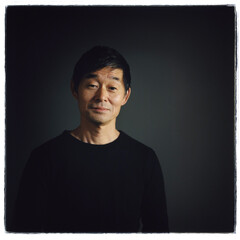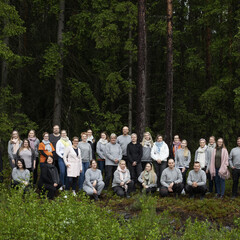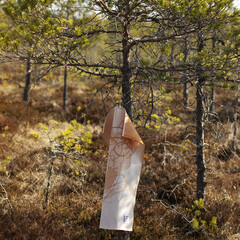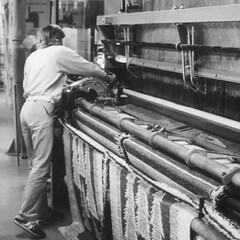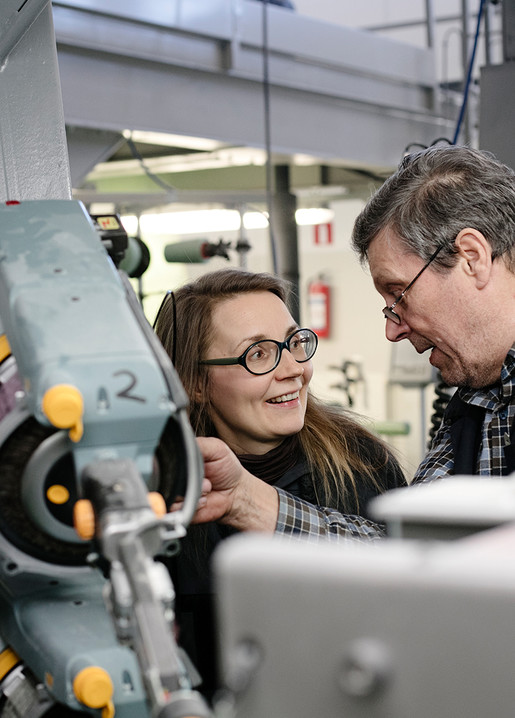
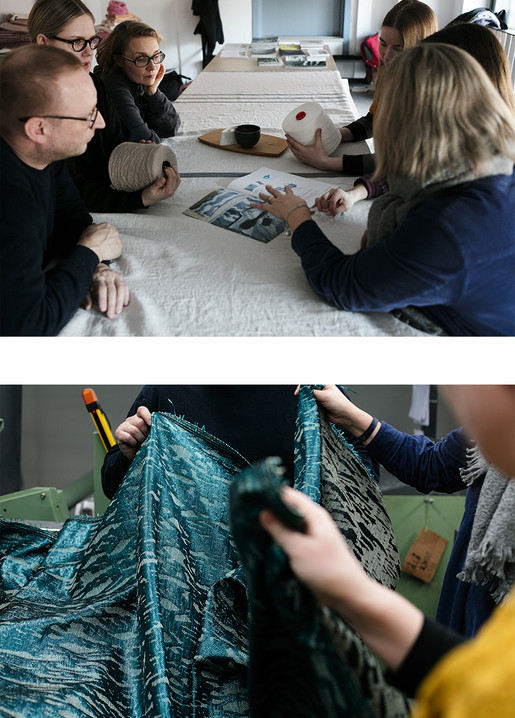
LEARNING BY WEAVING
Students from Aalto University challenge their designs at the Lapuan Kankurit weaving mill.
The weaving mill in Lapua, Finland is full of life, as students from Aalto University gather to learn about industrially woven fabrics. "They get to see how weaving with a machine changes the design", says university teacher Maija Fagerlund.
The CEO of Lapuan Kankurit, Esko Hjelt, says that they wanted to offer a setting where students could learn about weaving with machines to a university that actively develops the industry. Getting to meet new designers also helps Lapuan Kankurit grow. "We have our own collections, so it's good to see other points of view. We get to challenge our own thinking", he says.
Teaching weaving at Aalto University begins with experimentation. Maija describes the first course, where students only use neutral shades as well as black and white. Colours enter the picture later. "We focus on how to tell a story with materials and textures", she says. "You get to play and try out different things", student Heta Vajavaara says. She took the first course by chance and decided to continue with weaving. Heta is also a fashion designer and designs clothes from woven fabrics. "My starting points are textures and how they can be used", she says.
While the students weave their own designs in Lapua, the visit also has another purpose. "They also create a design for Lapuan Kankurit, and some of those are selected for production", teacher Maija Fagerlund says.
Among the chosen designs is Heta's scarf, which is based on a woollen warp that's combined with a bright orange linen thread. "Linen is a stiff material and if it's given space, it kind of ebbs and flows. It feels like the thread has a personality of its own", Heta describes.
Esko Hjelt says that the techniques used at the weaving mill ensure that the scarf can be woven almost as if it were done by hand. "That's our expertise", he says. "We need to think about how the techniques, designs, and materials work together." What Esko finds outstanding about Heta's scarf design is that it isn't conventional. "If it were basic, you'd just have orange stripes on the surface. Here they're hidden inside the weft and that makes it unique." "You can't print a scarf like this – it needs to be woven", Heta adds. "And the only place to do that in Finland is here."
All three agree that the future of textile design looks bright. Teacher Maija Fagerlund says that weaving courses at Aalto University are always full. "Students are interested in combining woven fabrics and clothing design." "We're encouraged to think about different ways to be a textile designer", Heta says. "The clothing industry is unsustainable and that needs to change. I feel our education prepares us for changes in the future." Maija agrees: "The textile industry is constantly progressing."



